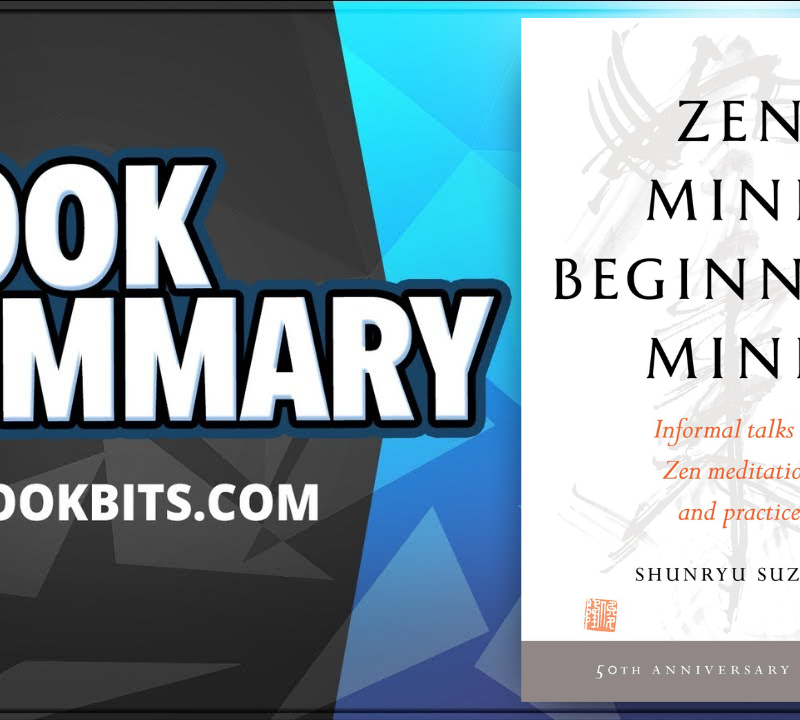JOIN THE ‘BEST BOOK CLUB’ NOW HERE
DOWNLOAD THIS FREE PDF SUMMARY HERE
STOP TRYING TO ACHIEVE YOUR GOALS BY YOURSELF AND BE COACHED TODAY HERE
CHECK OUT THE FOLLOWING Book | Summaries | Course | YouTube |Spotify | Instagram | Facebook | Newsletter | Website
With Search Inside Yourself, Chade-Meng Tan, one of Google’s earliest engineers and personal growth pioneer, offers a proven method for enhancing mindfulness and emotional intelligence in life and work.
Meng’s job is to teach Google’s best and brightest how to apply mindfulness techniques in the office and beyond; now, readers everywhere can get insider access to one of the most sought after classes in the country, a course in health, happiness and creativity that is improving the livelihood and productivity of those responsible for one of the most successful businesses in the world.
With forewords by Daniel Goleman, author of the international bestseller Emotional Intelligence, and Jon Kabat-Zinn, renowned mindfulness expert and author of Coming To Our Senses, Meng’s Search Inside Yourself is an invaluable guide to achieving your own best potential.
Summary
- Emotional Intelligence (EI) refers to the ability to monitor one’s own and other’s feelings and emotions, to discriminate among them and to use this information to guide one’s thinking and actions. It is one of the best predictors of success at work and fulfillment in life. Its benefits include:
- Stellar work performance
- Outstanding leadership
- The ability to create the conditions for happiness
- We all have a set point of happiness that we return to whenever the euphoria of a pleasant experience or the sting of an unpleasant one fades out. We assume this set point to be static, but with deliberate training, it is movable.
- The aim of developing emotional intelligence is to help you “optimize” yourself and function at an even higher level than what you are already capable of.
- Neuroplasticity: What we think, do and pay attention to changes the structure and function of our brains.
- To begin training EI, we begin by training attention. A strong, stable and perceptive attention affords you calmness and clarity and is the foundation upon which EI is built. For e.g., self-awareness depends on being able to see ourselves objectively and that requires the ability to examine thoughts and emotions from a third person perspective. Attention relates to self-regulation.
- Response Flexibility: Ability to pause before you act.
- Affect Labelling: Simple technique for self-regulation and managing emotion in which you label feelings with words as they happen.
- Once we develop strong attention, we focus it on our bodies for 2 reasons:
- We usually experience the emotion more vividly in the body than in the mind.
- Bringing the attention to the body enables a high-resolution perception of emotion. Your perception is so refined across time and space that you can watch an emotion the moment it is rising, its changes and the moment it ceases. The better we can perceive our emotions, the better we can manage them.
- Mindfulness is easy to understand but hard to sustain for long periods of time. It deepens calmness and opens up possibility of appreciating each moment in life. It trains 2 important faculties:
- Attention: Taking possession of the mind.
- Meta-Attention: The ability to pay attention to attention itself. It’s the secret to concentration.
- Mindfulness meditation is useful for training the quality of attention. More meditation training corresponds to less amygdala activation. The way to develop high resolution perception of emotion is to apply mindfulness to the body. You can detect anger by observing your mind, but it is far easier to do so by observing the body (e.g shallow breath, tight chest). Also, intuition is experienced earlier in the body. The base ganglia tells us about right vs wrong via gut feelings.
- Meditation gets your mind relaxed and alert at the same time. This leads to calmness, clarity and happiness.
- A calm and clear mind is automatically happy. Happiness is the default state of mind. It is not something that you pursue, but something that you allow. Happiness is just being.
- In meditation, like in exercise, growth comes with overcoming resistance. There is no bad meditation.
- Learn to let go. Have expectations before meditation, but not during it.
- The best meditation posture is one that helps you remain alert and relaxed at the same time for a long period of time. Traditional 7 point meditation posture includes:
- Straight back
- Legs crossed in Lotus position
- Shoulders relaxed, held up and back
- Chin tucked in slightly
- Eyes closed or gazing into space
- Tongue held against the upper palate
- Lips slightly apart, teeth not clenched
- When living in mindfulness, neutral activities tend to become pleasant, and pleasant experiences become even more pleasant.
- Walking meditation: When walking, bring full moment to moment attention to every movement and sensation in the body; and every time attention wanders away, just bring it back.
- Our attention is the most valuable gift we can give to others.
- Mindful conversation includes
- Listening
- Looping: Going back and forth to make sure you understand what the speaker said.
- Dipping: Checking in with ourselves
- Self-Awareness means knowing one’s internal states, preferences, resources, and intuition. Deepening self-awareness is about developing clarity within oneself. As we deepen our self-awareness, we realize that our emotions are what we feel and not who we are.
- Strong emotional awareness leads to self-assessment. Accurate self-assessment leads to Self Confidence. Self Confidence means being flexible with one’s ego and being aware of it.
- 2 formal practices to develop self-awareness:
- Body Scan: Bring mindfulness to your whole body. Scan head, face, neck, and shoulders, back and front for a minute each. Then think of positive emotions and see what is different. Body scan ends up relaxing the body and may even lead to sleep.
- Journaling: Practise of self-discovery by writing to yourself. Start with a prompt like “What am I feeling now?” and write it out. 4 minutes of journaling can make a big difference. Some suggested prompts are “What I am feeling now is..”, “What hurts me is..”, “I am aware that..”, “I wish..“. Sample Journaling workflow:
- Prime the mind: Spend 2 or more minutes thinking about one or more instances in which you reacted positively to a challenging situation and the outcome was good.
- 30 second pause
- Journal for 2 minutes per prompt. Sample prompts are “Things that give me pleasure are..”, “My strengths are..“.
- Prime: Think about situation in which you reacted negatively, and outcome was not satisfying.
- 30 second pause
- Journal. Sample prompts are “Things that annoy me are..”, “My weaknesses are..“.
- JOIN THE ‘BEST BOOK CLUB’ NOW HERE
DOWNLOAD THIS FREE PDF SUMMARY HERE
STOP TRYING TO ACHIEVE YOUR GOALS BY YOURSELF AND BE COACHED TODAY HERE
CHECK OUT THE FOLLOWING Book | Summaries | Course | YouTube |Spotify | Instagram | Facebook | Newsletter | Website
- 4 principles for dealing with distress:
- Know when you are not in pain and appreciate the pain free time.
- Do not feel bad about feeling bad.
- Do not feed the monsters (bad emotions).
- Start every thought with kindness and humour.
- 3 types of happiness (in increasing order of sustainability)
- Pleasure
- Passion/Flow
- Higher Purpose: Being part of something bigger than yourself that holds meaning to you.
- 3 steps to motivation:
- Alignment: Aligning our work with our values and higher purpose. Autonomy, mastery and purpose are essential.
- Envisioning: Seeing the desired results/future and talking about it.
- Resilience: Ability to overcome obstacles. Everybody fails. What distinguishes successful people is their attitude towards failure.
- It takes 3 positive experience (5 if we are talking about marriages) to overcome a negative one.
- The best way to make tough decisions is with kindness and empathy. Empathy increases with kindness. If you are strong in self-awareness, you are also very likely to be strong in empathy.
- Wish other people to be happy when you meet them, and you will radiate kindness. Compassion is a state of extreme happiness.
- Bringing out the best in people:
- Establishing trust: Empathy helps us build trust. It helps people feel seen, heard and understood. Trust has to begin with sincerity, kindness and openness.
- When giving feedback and praise, do so in a way that encourages a growth mindset. Structure feedback around effort rather than labelling the person.
- Ambition and personal humility are 2 qualities of great leaders.
- Using the SCARF model, you can help people get what they want and increase your level of influence.
- Status: Relative importance
- Certainty
- Autonomy: Perception of exerting control over one’s environment.
- Relatedness: Perception of how many other people like/dislike you.
- Fairness: Never underestimate a person’s sense of fairness. It is overwhelming enough that he may often sacrifice his own self-interest for its sake.
- 5 steps to conduct difficult conversations:
- Prepare by walking through the 3 conversations:
- Content conversation: What happened.
- Feelings conversation: What emotions are involved.
- Identity conversation: What does this say about me (Am I competent/Am I a good person/Am I worthy of love)?
- Decide whether to raise the issue: What do you hope to accomplish? Try shifting in a mode that supports learning and problem solving.
- Start objectively, from the perspective of a disinterested 3rd party.
- Explore their story and yours.
- Problem Solve.
- 2 Key insights for Difficult Conversations
- Impact is not the Intention: Usually we judge ourselves by our intentions, but we judge others by the impact of their behavior because we do not really know their intentions and infer them from impact.
- Beyond the content and emotion in every difficult conversation, there are more importantly, issues of identity.
- The problem with email is that we make up the emotional context in the absence of data such as facial expressions, often with a negative bias.
JOIN THE ‘BEST BOOK CLUB’ NOW HERE
DOWNLOAD THIS FREE PDF SUMMARY HERE
STOP TRYING TO ACHIEVE YOUR GOALS BY YOURSELF AND BE COACHED TODAY HERE
CHECK OUT THE FOLLOWING Book | Summaries | Course | YouTube |Spotify | Instagram | Facebook | Newsletter | Website













